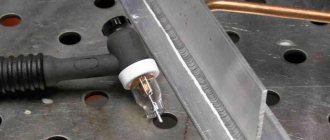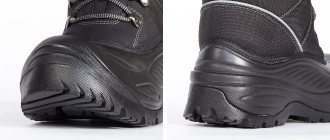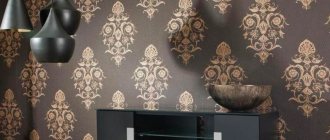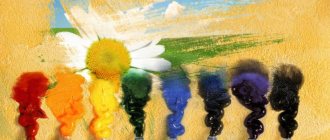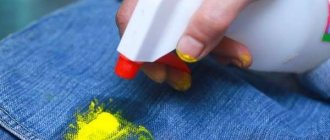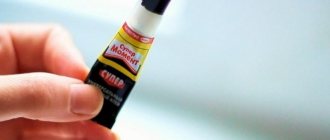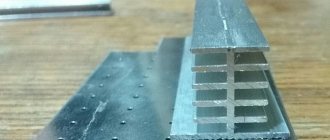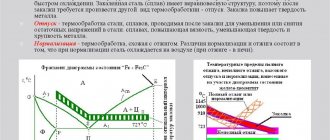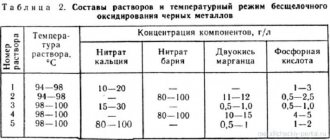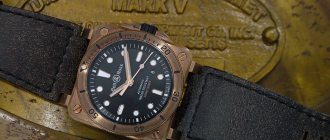Super glue must have super qualities. Be versatile, reliable and create long-lasting grip. Of course, such a composition can be found in the store. But with the advent of Chinese counterfeit goods, you can often run into fakes. It is much safer and cheaper to make super glue at home yourself. Moreover, all the “old-fashioned” methods of creating it have been tested repeatedly over the years.
Simple and affordable alternatives to store-bought glue
The easiest option is to cook a paste. It is perfect for wallpaper or paper crafts. It is prepared from ordinary flour or starch. These ingredients can be found in any housewife's kitchen. The advantage of this glue is safety. This is especially important if young children are involved in creativity.
To obtain a high-quality adhesive solution, you must:
- take flour or starch at the rate of 6 tablespoons per liter of water;
- carefully place the dry substance in cool water;
- Start heating it until the mixture has the consistency of thick jelly.
Another natural product that is harmless to humans is casein glue. You can also prepare it from what is in almost any refrigerator. To do this you will need milk and nine percent vinegar, or cottage cheese, soda and water.
- In the first case, you need to heat 500 milliliters of milk and pour in 3 tablespoons of vinegar, mix well. As a result of a chemical reaction, casein will precipitate.
- In the case of cottage cheese, half a kilo of this product should be stirred in half a liter of water, add 1 tablespoon of soda, mix thoroughly and leave to stand for about half an hour. The result will be the same as in the first case - casein will precipitate.
After this, the casein must be strained using gauze and a sieve, squeezed thoroughly, and blotted with a dry cloth or paper towel. The resulting lump needs to dry. Dried casein is ground in a coffee grinder, poured with water in a ratio of 1:2 and allowed to brew for half an hour. This mixture is perfect for gluing wood, ceramics, foam, plastic or fabric.
Need wood glue? Wood glue
Perhaps this is one of the most successful compositions for wood. But it also firmly and reliably connects cardboard, paper and many other materials.
But this tool has some characteristic features:
- It cannot be stored in liquid form for a long time, as it begins to deteriorate: it gelatinizes and mold forms on the surface.
- The composition has an unpleasant, rather pungent odor.
The most commonly used are the following:
Cook the glue in a water bath
- Simple wood glue is crushed, then soaked in water until it swells greatly. In the process, it becomes jelly-like and quite soft. Next, it is placed in an oilcloth (you can use a regular tin can for this) and gently heated in a water bath with constant stirring. A wooden stick is used for this purpose.
If the mass suddenly burns, it will turn yellow and lose some of its working adhesive qualities. When the mass turns into a thick liquid, add vodka to it in a ratio of 950 to 720. Vodka, respectively, is 950 grams, and the mass is 720.
- Carpenter's glue and half-and-half water must be boiled in an oilcloth. After the boil begins, when the mass begins to thicken, you need to pour it into a porcelain mortar and then grind it with a pestle.
The result should be a gelatinous, homogeneous mass, which is laid out on a special plate and cooled. Then it is cut into pieces. To use, approximately 720 grams of the product are dissolved in a mixture of vodka and water (360/720), bringing the resulting product to a boil. - In a liter of water in a water bath, you need to heat a kilogram of wood glue and a liter of table vinegar. After the adhesive substance has completely dissolved in the liquid, add a liter of vodka and mix well.
Foam glue base
Today, foam plastic is often used to insulate and warm homes. Plates of this material are usually glued to load-bearing walls. To carry out this procedure, you will need a special glue, just any kind will not work here. The fact is that some solvents, such as acetone, can melt the material.
The ideal adhesive for polystyrene and polystyrene foam is the already mentioned carpentry compound.
But at home you can make another product for gluing such materials - one that contains cottage cheese. Slaked lime is mixed with cottage cheese in equal proportions until a fairly homogeneous substance is obtained. This composition hardens quite quickly, so you need to prepare it in the required quantity and use it immediately.
How to make glue from casein
Casein glue is suitable for a variety of leather and wood products. To prepare it you will need regular cottage cheese, which must be degreased. It is soaked in an aqueous solution of soda (one or two tablespoons per liter of water) for about twenty minutes. Then it is washed with clean water, wrung out well and dried. The mass should harden. It is crushed to obtain a dry powder - this is casein.
To prepare the glue, a certain amount of it is placed in a container, where water is added in a thin stream, with constant stirring, in a ratio of one to two (there should be more liquid). It turns out to be a rather thick mass. It is very important to take a responsible approach to the mixing process - the quality of the resulting product directly depends on it.
This event usually takes up to half an hour.
Turbo composition - liquid glue from old linoleum
In addition to the above, there are many different methods for preparing high-quality glue for glass, blocks and PVC.
This composition, prepared at home, can be successfully used for pasting walls and ceiling surfaces. It is enough to choose from a variety of recipes the one that best suits you.
A very simple and affordable way is to use old, used linoleum and acetone. The process is very simple. Linoleum must be crushed (cut with a knife or scissors) into small fragments that need to be placed in an airtight container.
Then add acetone there, in an amount twice the amount of the first ingredient.
Close the container with the contents tightly and leave in a dark place for about half a day (12 hours). Usually this time is enough for the pieces of flooring to dissolve completely. The resulting product can reliably connect products made of porcelain, metal, leather, wood, ceramics and other materials.
Replacement for PVA glue
One of the most popular types of glue is polyvinyl acetate, so it would be unfair not to indicate what can replace PVA glue.
An alternative composition can be made at home from water, flour, alcohol, photographic gelatin and glycerin:
- To do this, 2.5 grams of gelatin must be infused in 500 milliliters of water for about 24 hours.
- Then add flour and heat the liquid, stirring constantly, until a homogeneous consistency is obtained.
- When the mixture has cooled, pour 10 milliliters of alcohol into it and add 2 grams of glycerin.
For foam plastic
Not every glue is suitable for gluing foam plastic. To make it yourself, you need to take slaked lime and cottage cheese in equal quantities. The ingredients are mixed until smooth. The mixture hardens quickly and should be prepared before use.
Reference! The special glue for polystyrene foam can be replaced with the carpentry glue described above.
Self-made foam adhesive should not contain harmful components:
- Solvents based on acetone.
- Gasoline, kerosene, white alcohol.
- Esters and alcohols.
- Flammable components.
- Chlorine derivatives.
Stick it for centuries
Sometimes the issue of the reliability of the adhesive is acute, especially when it comes to repairing an inflatable boat or swimming mattress. What glue can replace the finished product in this case? The answer lies on the surface: what we glue, we make from. To patch a hole in a rubber boat, you need to prepare rubber glue:
- To do this, the old unusable bicycle inner tube needs to be cut finely.
- Place in a container and fill with solvent 647.
- Close the container with a lid and leave for several days until the rubber is completely dissolved. Instead of the specified solvent, you can also use gasoline or acetone.
When talking about what can replace glue at home, we cannot fail to mention the universal version of this product, which is suitable for almost any surface.
To prepare it, you need to gradually add polystyrene foam to the solvent 647 already known to the reader and stir it until the mixture becomes thick enough. If you need to glue cardboard, paper or wood, it is quite suitable. If you need a stronger version of glue, then you need to add nitro paint, soda, as well as wood and metal filings to the resulting mixture: 2 tablespoons per 100 milliliters of glue.
Rubber
Rubber products require an appropriate adhesive composition. You will need small pieces of rubber and gasoline. The pieces should be finely chopped and placed in a container, filled with gasoline. The mixture is left for a couple of days.
After infusion, the solution is drained and left in a cold room. The result is a thick, sticky, homogeneous mixture. Before applying the adhesive composition, the surface must be degreased.
Rubber glue, when properly prepared, should have the following properties:
- Water resistance. This is relevant when using glue to repair boats and other products that often come into contact with water.
- High strength. The glue must have good strength in order to be used in different conditions.
- Fast drying. Most rubber bonding compounds dry quickly when exposed to heat, which shortens the bonding process.
- Seam elasticity. This is a key feature of the rubber compound. It should be flexible, soft, pliable, but at the same time durable.
Food grade glue
It also happens that you need to glue materials together with something non-toxic. For example, when it comes to decoupage of Easter eggs, which will then be eaten. What can replace glue in this case? Here, in addition to the paste mentioned above, sugar glue is perfect.
In this case, put a glass of water on the fire, add 250 g of sugar and cook, stirring, until the liquid begins to thicken to a viscous state. Raw egg white will also perfectly secure paper elements to eggshells.
Thus, there are a great many options for what you can use to replace glue at home. You just need to choose the right composition based on the characteristics of the materials being glued.
Find out how you can make affordable, high-quality glue at home for almost any purpose: from wallpapering to metal (cold welding).
Universal glue
Place polystyrene foam in solvent 647 (can be replaced with toluene, gasoline or acetone) and mix. Add polystyrene foam until the liquid becomes viscous. If you need a glue that is not very strong, for example, for gluing paper, glass, wood, then the glue is ready. For gluing more serious things, we prepare further.
For 100 ml of the resulting liquid, add 2 tbsp. l. any nitro paint. Mix thoroughly.
Add small wood and metal shavings. For 100 ml of glue - 2 tbsp. l. shavings. Mix. If the glue should not shrink, then increase the amount of chips by 2 times. If you increase the amount of shavings 10 times, you will get glue-putty.
Add soda. For 100 ml of glue - 2 tbsp. l. soda Mix. The glue is ready. It can be stored for about a month in a tightly closed container. Glues almost everything well. Setting time is 30–60 minutes, complete hardening time is 24 hours.
Universal linoleum adhesive
We remove the backing from the linoleum (if any), cut it into small pieces using scissors and fill it with 647 solvent (toluene, gasoline or acetone) so that it completely covers the linoleum. Close the container with glue tightly for 24 hours until ready. Apply a very thin layer, as the glue shrinks. Glues almost any surface. Setting time is 30–90 minutes, complete cooling is 24 hours. If you need glue-putty, then add grated chalk, which should be 2 times more than glue.
Adhesive for rubber
This glue is good for gluing cameras, boats and other rubber products.
It is also made as linoleum glue. Finely cut rubber, for example, from old tubes, is filled with 647 solvent (toluene, gasoline or acetone) so that it completely covers the rubber. Ideally, it is better to use aviation gasoline. Cover tightly with a lid and wait several days (depending on the density of the rubber) until the rubber is completely dissolved.
Cold welding
To get a cold weld, you need to generously lubricate the gluing area with superglue. After joining, pour soda onto the joint. Wait 10-15 minutes. and shake off excess baking soda. If the surface for gluing is not perfectly flat, then first pour baking soda so that it penetrates into all the cracks, and then pour superglue onto it.
Epoxy adhesive
This glue, according to some reviews, is even better than superglue.
Mix epoxy resin with hardener in proportions of 1:10 at temperatures up to 25 °C. They are sold in hardware stores. Read the exact proportions on the packaging of the epoxy resin, as they may differ from one manufacturer to another. To accurately reproduce the recipe, use a kitchen scale or measuring cup. Use immediately after preparation or package in medical syringes, blocking the oxygen with caps.
Acrylic glue
Relevant if you want to disguise a seam. The glue will take on the color of acrylic paint.
Mix PVA glue with acrylic paint in a ratio of 4:1. When gluing, you need to fix the product for 24 hours.
Paste
Can be used for gluing paper, cardboard, wood and other products with a porous surface.
Pour flour or starch (it is better to use corn starch) with water in a ratio of 1:3. Stir clockwise with any object or beat with a mixer or blender until smooth without lumps. First, it is better to mix flour and water in equal proportions, and add the remaining water later. Place the resulting mixture over medium heat and bring to a boil, stirring continuously. The finished paste should have the consistency of thick jelly.
Alternative to PVA glue
This glue has properties similar to PVA. Can glue wood products and paper.
Infuse 2.5 photographic gelatin (not to be confused with food gelatin) in 500 ml of water for a day. Add 50 g to the present gelatin. flour and bring to a temperature of 90 °C. This process is best carried out in a water bath, stirring continuously. The consistency of the glue should resemble paste. Cool under the lid to room temperature. Add 2 gr. glycerin and 10 ml of alcohol or vodka.
Casein glue from milk or cottage cheese
This glue is used for gluing porous surfaces, foam, wood, leather, porcelain, ceramics, plastic, and fabric. Shrinks.
Heat half a liter of milk to 80 °C. Add 3 tbsp. l. table vinegar (9%) or 1/5 tsp. citric acid. Mix well. The milk, if it is real, should react and the casein will precipitate.
Instead of milk, you can use cottage cheese. To do this, add 1 tbsp to 0.5 liters of water. l. soda and 0.5 kg of cottage cheese. Stir and leave for 30 minutes. The further preparation process is the same as for milk casein.
Strain the casein through a sieve or. Casein should contain at least less moisture, so it is advisable to additionally soak it on napkins or rags. Leave for some time (about a day) in a dry place until completely hardened. Grind in a coffee grinder until powdery.
You can skip this step if you buy casein powder at a hardware store. When you need glue, dilute the powder with water in a ratio of 1:2. Add water in a very thin stream, stirring continuously in a circle. For these purposes, it is better to use a blender or drill with a mixer attachment. Leave for 40 minutes, then stir again.
Do you want factory quality glue? Look at Ozone. There are many of them for every taste!
- an adhesive that is widely used in various fields, and, without exaggeration, is one of the most popular.
And although you can purchase this product without any problems, making it yourself will also not be difficult, which will help out in a situation where you urgently need to glue something together, but the means are not at hand.
Polyvinyl acetate
Polyvinyl acetate, better known as PVA glue, is produced on an industrial scale using special equipment. The polyvinyl acetate dispersion and filler are mixed in the mortar mixer.
There are different types of this glue (stationery, wallpaper, universal, etc.) and, accordingly, manufacturing recipes. It is difficult to accurately follow the PVA recipe at home, but making an analogue that will be virtually inferior in its properties and characteristics is not at all difficult.
How to use
In order for the connection to be strong and last for many years, you must strictly follow the instructions.
Important! The solvent included in the composition is toxic, so precautions must be taken when working with the substance.
Bonding can be of two types: hot or cold.
With the hot method, objects are glued together in a few minutes. The temperature should be 70-160 degrees.
With the cold method, the adhesive properties appear after a few days. Room temperature is suitable.
Any instructions for glue say that you first need to degrease the surfaces. Hydrocarbon solvents are suitable for this.
The thickened composition must be diluted. There is no specific thinner that will suit all products. For substances based on nitrile butadiene rubber, dilute with nefras or ethyl acetate. To avoid clots, diluted glue must be heated in a water bath to 45 degrees.
How can you make PVA glue “with your own hands”?
Recipe
There are many recipes for making your own glue. We offer one of the most easily implemented and accessible recipes, almost all of the ingredients of which are sold at the pharmacy (except for photographic gelatin, which you need to look for in a specialty store, as well as flour - if you suddenly don’t have it at home, you will definitely find it in the nearest grocery store).
So, to prepare PVA you need to take:
- 1-1.2 liters of distilled water;
- 20-25 ml of ethyl alcohol;
- 4-5 g glycerin;
- 5-6 g photographic gelatin;
- 100-120 g flour.
Cooking process
Gelatin is soaked for a day in regular warm tap water according to the instructions, after which it is dissolved in a steam bath. Flour and distilled water are added, and the mixture is kept on fire until it acquires the thickness of sour cream. During boiling, the mixture must be stirred constantly.
When the required consistency is achieved, the mixture is removed from the heat and cooled slightly. After this, you need to add alcohol and glycerin and stir everything thoroughly so that there are no lumps. If the formation of lumps still could not be prevented (they may appear during the boiling stage), then you can pass the glue through a sieve.
When the mass has completely cooled, it can be used for gluing paper, wood and other parts for which PVA is usually used.
Storing finished glue
You can store a homemade product for no more than six months. Ideal storage temperature is + 10-15 degrees.
Nothing bad will happen if the glue remains at room temperature, but when the thermometer is minus, the “functionality” of the product decreases sharply. It will be usable for no more than one month.
Useful tips
Recommendations from experts will help you glue surfaces together efficiently:
- Some formulations thicken during long-term storage. There is no universal means for dilution. To avoid difficulties, check the expiration date when purchasing.
- The temperature in the room where the work is carried out should not be lower than +5° C.
- Before gluing, the surfaces must be cleaned of dust, dirt, degreased and thoroughly dried.
- The adhesive properties of the material will increase significantly if you sand them with sandpaper before applying the mixture.
- First you need to sand the surface (treat it with sandpaper) and only then degrease it.
- The best option for degreasing would be an easily evaporating solvent, such as gasoline or acetone.
- The composition should be applied with a brush, and if it is thick, then with a spatula.
- The minimum thickness of the adhesive layer is 2 mm.
- When repairing shoes and boats, a layer of 1 mm thick should be applied to the previously sanded surface. After this, put a piece of gauze, press it with a spatula and apply glue again, and only then firmly press the surfaces to be connected to each other.
- Any stains or excess product must be removed immediately using a spatula or knife.
- Keep the area to be glued under pressure (load) for at least several hours.
Low indoor humidity slows down the drying of the glue. A high-quality product sets within 30 minutes, and final hardening occurs after approximately 48 hours.
Manufacturers of PVA glue in Russia
In Russia, many companies produce PVA glue and dispersions. For most of them, this product is only part of the range. These enterprises specialize mainly in the production of paint and varnish products. In addition, there are companies that produce exclusively PVA products, such as Polymer Export, Rikol and others. These are large manufacturers engaged exclusively in the production of PVA glue and dispersions based on vinyl acetate.
When choosing a product, give preference to reliable manufacturers, especially if you are going to glue large or expensive items.
Excellent dextrin based paper adhesive
For origami, quilling, and paper appliqué, dextrin paper glue, which you can prepare at home, is ideal. And for this it is not at all necessary to look for dextrin in stores. It is easily prepared from starch. You need to take it in the required quantity. Place in a heatproof bowl into a slightly heated oven. After which, gradually increase the temperature to 160ºС and maintain at this temperature for about an hour and a half. Under the influence of hot air, starch is broken down, and it turns into dextrin. Now you can start preparing the glue.
Ingredients:
- dry dextrin – 3 tbsp. spoons,
- water – 4-5 tbsp. spoons,
- glycerin – 1 tbsp. spoon.
Preparation:
- Mix dextrin powder with water. Heat slightly until the dry substance is completely dissolved, stirring continuously. Then add glycerin.
Areas of application of glue
PVA glue is used in a wide variety of areas, from gluing paper to various types of industry. This product is widely used in repair work (wallpapering, priming, adding to cladding solutions, gluing elements made of wood, fiberboard, etc.)
This adhesive is used in the printing and packaging industries for gluing paper products. It is also widely used in the woodworking and furniture industries, since PVA does not change the color of the wood and allows it to preserve its properties.
In the textile industry, it is used to “strengthen” carpets and join fabrics together. It is also used in the production of glass and paint and varnish products, household chemicals, shoes, etc.
Stamps
The following brands of glue can be used to tightly glue rubber to rubber:
- U425-3 is made on the basis of rubber with the addition of nefras and ethyl acetate, used for gluing with subsequent vulcanization of the material.
- 4NB-UV is a one-component, oil- and water-resistant adhesive, operating temperature range is from –40 to +60° C. It can be used for rubber vulcanization at +180° C. It is used for connecting surfaces of nitrile, natural, chloroprene rubber, and rubber-fabric materials , shoe repair and manufacturing, agricultural machinery production.
- Rubber adhesive 4508 has increased stickiness and water resistance, and forms an elastic seam. It is used in the production of rubber products, rubberized fabrics, and suits intended for special protection. The best composition for repairing PVC boats, fishing suits and leather goods.
Rubber glue 4508
You can make a good tool for gluing various rubber products with your own hands:
- Grind the soft rubber into small pieces and fill it with aviation (clean) gasoline.
- Leave the mixture to infuse for several days, after which filter the resulting mass.
- Let the mixture sit for a few more days in a warm place.
Do you make glue yourself or is it better to buy it?
Prices for PVA glue vary depending on the type of glue, manufacturer, product weight, etc. For example, 1 kg of universal PVA glue costs, on average, from 40 to 60 rubles, a five to ten kilogram container will cost slightly less.
In general, this product has a very reasonable price, and if any complex or important work is expected, then it is better to buy glue made in an industrial environment. But if you already have experience in making PVA yourself, or there is no way to purchase it, and something needs to be glued together urgently, then you can do it without any problems on your own.
Epoxy glue: manufacturing
To make such a composition you will need a modified resin and a special hardener. If the product is intended to be used in construction work, various additives may be required.
This could be aluminum powder, for example. Epoxy glue is quite difficult to prepare yourself; you must follow the instructions exactly.
The hardener and epoxy resin mix well: forty parts of hardener you need to take sixty parts of resin. After the mixture thickens well, place it in water heated to seventy degrees. All necessary fillers are added to the mass last, to give it the required consistency. The product must have a certain fluidity so that it can be easily and simply applied to the prepared surface.
What can replace PVA glue?
The problem with replacing PVA most often arises among those who live in foreign countries, since this product is sometimes quite difficult to find there. If suddenly there is a need to find a replacement, then you need to focus on the material of the surfaces that must be connected. For wooden parts you can buy special glue for wood, for gluing wallpaper - “wallpaper”, etc. Paper or cardboard is glued at home using ordinary paste (made from flour and/or potato starch. So it’s not difficult to find a substitute for PVA , the only negative is that such products are often more expensive than this universal, inexpensive and popular glue.
SHARES
Hi all! My name is Daria Dzyuba, and in today’s article on I will tell you what and how to replace latex.
5% discount - enter code JSN873 in the cart for each of your orders, otherwise the discount will not be activated! Write down the code!
There is free shipping worldwide, cards accepted, Russian language, daily sales up to 80%
Be sure to use cashback (this is a return of money to you for your purchases on iHerb, Aliexpress, Ebay and hundreds of other stores in Russia and the world)
How to use cashback, full instructions - https://dzu.ba/letykakwp
Complexity:
Just
Result:
DIY latex for makeup
And for those who have a weak Internet, the article is presented below. This is the same thing, only in text form.
I’m not a professional make-up artist, and often on set they say to me: “Give us a scratch,” and I’m like: “Why didn’t you say, I have latex at home, I don’t carry it around with me all the time, you didn’t want it at all.” " So what am I doing? I go to the pharmacy and take BF-6
. This is the first lifesaver if you don’t have latex on hand or if you can’t buy it.
This is a medical adhesive for sealing wounds. I’ll make a reservation right away, if you’re thinking of gluing something onto the papillae with it, like all sorts of cool little things, it won’t work. He’s on alcohol and it will hurt his boobs, I checked, this model still can’t forgive me.
The next thing you can replace latex with is eyelash glue
, because this glue is often latex-based, but we don’t take the same glue as resin, we take light, viscous glue. This glue is the most common, depending on the company, but it is clear that the consumption of such glue will be much greater if you need to create a texture for the floor of your face, therefore, your makeup will cost much more, because the price ratio of latex and eyelash glue is different.
And the most hacky option that can replace latex is PVA glue
. It also works, but not as persistently, it is more chemical, but it still works if you urgently need to create a latex substitute.
And by the way, regarding Halloween - today I was wearing a T-shirt with a zombie, specially preparing for it. And now I will show in practice what the difference is between latex and all secondary means. Let's begin.
A huge disadvantage of latex is its smell. It's such a disgusting ammonia smell. I have latex from , but there is also at least one from , which can be easily obtained in Moscow and ordered throughout Russia, and Graftobian is still more pretentious in this matter, but in my opinion it produces better latex.
If you choose between colored or transparent latex, then it is better to choose transparent, because Kriolan has colored latex, which is flesh-colored, very loose and incomprehensible in consistency, extremely dubious in my opinion, and it frankly dried out for me. It is also better not to apply latex to your hair, because you can get hair removal.
The next one we will have is a test piece - this is PVA glue. Visually very similar to latex, but not latex. Some instructions say it can be diluted with water, but I won’t do this, I’ll take it in its pure form.
In order to fully evaluate how they dry, I will immediately make a texture with a paper napkin for both latex and PVA glue.
PVA glue is frankly wet, it saturates the napkin instantly, because its texture is completely different. Due to the fact that I know how latex behaves, how and how quickly it dries, I allow myself to immediately make a second layer so that it does not dry out. And then I will deal directly with our alternative types of latex.
Latex also corrodes cotton swabs very badly and turns into funny things literally from the second dip, so the swabs also have to be changed often.
Our next replacement option is BF-6 glue. It is already a completely different color, it dries even longer, but due to the evaporation of alcohols it still dries out, because this is a medical product, and it still serves as an outright disinfectant for wounds, which they seal. But it immediately produces a burn effect. It also seems to me that iodine is mixed in it, because it has an alcohol-iodine smell. The consistency is viscous, very similar to jelly, and this is to some extent a useful substitute for latex, because it still contains less chemicals.
We'll also glue a piece of paper.
But if you are making latex at home and you have a hairdryer on hand, then you can directly dry any of these methods with a hairdryer in order to get a faster result.
The color of this glue is beautiful, and if you need the effect of old wounds, or something like that, or you are pursuing the goal of making a darker texture in advance, then BF-6 glue will help.
I have BF-6, but, in my opinion, there is also some kind of BF-3, but I honestly haven’t looked into the issue of BF, which one I had, I just grabbed it at the pharmacy.
And the last option is eyelash glue. Of course, its consumption will be enormous, but in its properties it is very similar to latex, because this glue is most often latex-based. If you sniff it, it smells just like latex, with a slight nasty note.
And if you had to make your scars, burns and other things with eyelash glue, then take the cheapest one, it will be easier on your wallet and budget. It behaves almost like latex.
The main thing is not to use eyelash glue from for these purposes. This is a vigorous louse that will remember everything for you, and any model on which you made this glue will remember how long it took her to tear it off from herself and from everywhere.
We time it for 5 minutes. This should be enough time for my latex to dry and see how our alternatives perform.
After waiting the allotted time, we can test our latex and its analogues in action.
Latex.
In 5 minutes it has completely dried out, and now I can calmly begin to tint it, or you can directly select the color and texture that you want, if that is your goal.
It's still wet. If I poke my finger at it, it stays on my fingers. In a thinner layer, it has already dried, therefore, it needs to be applied in a very thin layer and given more time to dry, or you can ignore the fact that it is wet and start covering it right away.
It hardens into a tighter and less plastic crust; after all, it does not serve this purpose, but for me it has already hardened and you can also start covering it. And due to the fact that it is such a creepy dark color, you can add a little red around the edges, fill it with blood and we have a rotting burn wound.
Glue for eyelashes.
It also didn’t completely dry in places, that is, in those places where there was more of it and where it ate away at my napkin, it was still wet, but where it was a thin layer, it grabbed perfectly, and if you look, eyelash glue is very similar In all respects, it resembles latex, therefore, eyelash glue is the closest analogue of latex. But as I already said, its consumption will be a little higher, and therefore, in percentage terms, this method is the most expensive.
Let's summarize. The cheapest method available in all pharmacies is BF-6 glue. Plus, it is the most harmless, because it is a medical product. And the most dubious method is PVA glue, in my opinion, because it has not dried yet, it is wet, and yet chemistry is chemistry.
I’ll tell you in more detail next time about why we make such chewy, crumpled textures.
I hope you found the information useful. And now, when you cannot find latex on a store shelf, you will not be upset and will find a worthy analogue for it.
And then I say goodbye to you. Subscribe, like. Bye everyone!
Cosmetics and tools used:
Liquid Latex by Graftobian
Glue for wounds BF6 PVA glue (stationery, regular white)
Glue is used not only in everyday life, but also in virtually all industries. It can be used to glue completely different materials. Thanks to new technologies, manufacturers are producing an adhesive composition that is quite reliable and suitable for gluing almost all materials. PVA glue is familiar to almost every person and is most often used in the household.
Special glue for fabric
Women who are actively involved in needlework and constantly gluing some elements onto fabric know how important it is to have the right product at hand in time.
Here are three easy options for making your own glue:
1 option
Ingredients:
- Flour - 3 tablespoons.
- Water - 1 glass.
How to do:
Dilute the flour in a small amount of cold water and pour a thin stream into a glass of boiling water. Bring to a boil.
Option 2
Ingredients:
- Flour - 1 tbsp. spoon.
- Potato starch - 1 tbsp. spoon
- Sugar - 1 tbsp. spoon.
- Water - 1 glass.
How to do:
Mix all the ingredients thoroughly (so that there are no lumps) and bring to a boil.
Option 3
Ingredients:
- Gelatin - 1 pc.
- Flour - 2 tbsp. spoons.
- Sugar - 1 tbsp. spoon.
- Water - 1 glass.
How to do:
It is necessary to soak the gelatin in 1/3 water in advance overnight. In the morning, mix gelatin, sugar, flour in the remaining 2/3 of the water and bring to a boil.
The glue must be stored in a tightly closed container in the refrigerator.
Properties
PVA glue has many advantages and positive characteristics. Among its advantages are the following:
- High resistance to low temperatures and frost. This characteristic must be considered when PVA glue is already in use. In its liquid state, it can freeze at low temperatures. It is better not to leave the solution in winter in a place where it may freeze, since its further use will no longer be possible;
- Excellent adhesive properties. To reliably glue materials using PVA glue, you do not need to apply a thick layer, as it has excellent adhesive characteristics. If you prepare PVA glue under normal home conditions, it will be in no way inferior to that purchased in a store;
- PVA glue is completely safe during storage, production or use. It does not contain harmful substances, cannot ignite and does not release toxic elements into the air. It also does not cause skin irritation. The only thing you need to be careful of is getting PVA glue in your eyes. However, even if this happens, there is no need to panic. It will be enough to simply rinse your eyes with cold tap water, as shown in the photo;
- PVA glue is highly soluble in water, and can also be combined with solvents such as methanol, benzene, acetone and many others. It is better to refrain from diluting glue with toxic types of solvent, since the entire emulsion composition will become toxic.
What properties should a high-quality rubber adhesive have?
To choose the right adhesive for rubber, many criteria should be taken into account. Almost every modern composition forms a seam of increased strength, but this depends not only on the ability of the product to adhere to the surfaces being bonded.
When choosing a composition intended for rubber products, you should consider:
- conditions under which gluing will be carried out (humidity, temperature);
- the load that the surface will subsequently experience;
- how thick, stiff or flexible the material is;
- what the appearance of the glued product should be;
- the degree of chemical aggressiveness of the glue used.
After determining the requirements for the finished product, you should select the criteria according to which the product will be selected.
How to make the composition at home
PVA glue can be divided into several types:
- PVA-K is the simplest composition that is used for office needs. This glue is not resistant to moisture and cannot withstand even the slightest frost. This type of glue is the cheapest, but it can only be used in the office sector;
- PVA-B is an adhesive that is used in household conditions, most often for wallpapering. It has good moisture-resistant characteristics and is also able to withstand low temperatures, down to -40 degrees;
- PVA-M - This is a universal adhesive with improved characteristics. Another universal variety of PVA is PVA-MB, which is inferior in some qualities to the first. Using this glue you can glue not only wallpaper, but also materials such as linoleum or facing tiles, as shown in the photo.
Properties of a high-quality and reliable composition
A high-quality mixture will firmly connect the surfaces, fill voids, holes and seams, making the product airtight. Using a good product, you can repair tires, boats, rubber shoes, balls, tents, inflatable or water mattresses, and wetsuits.
Glue 4NB-UV
Characteristics of a good product:
- Resistance to moisture and high temperatures (from –40 to +100° C).
- Strength.
- Resistance to aggressive chemical compounds.
- Excellent filling capacity and flexibility.
- No unpleasant, pungent odor.
- Transparency.
Features of interaction
Cyanoacrylate and the alkaline environment of soda powder produce a chemical polymerization reaction that releases very high temperatures. This process has an amazing effect - the resulting connection has the highest strength. According to the observations of users of this method, the places where surfaces are glued with this composition often turn out to be more durable than the original surface.
There are special two-component super adhesive compositions on sale: the principle of their operation is similar to adding soda to one-component super glue: in one tube there is a composition with cyanoacrylate, in the other there is an alkaline solution.
Main components of the compositions
You can make almost any glue with your own hands - the only difficulty that may arise is in selecting the necessary components. Just a few years ago, it was considered the norm to make your own wallpaper product, and the wallpaper could last for decades. This material was prepared from flour and potato starch, since these products contain a lot of adhesives.
When creating tile adhesive, you will definitely need cement - it is this substance that can hold the tiles on the wall. To make rubber glue, you can use pieces of old rubber. The composition of the stationery includes gelatin and wood glue. There is even a special conductive glue that is used to fasten electrical circuits and mechanisms. Usually, to make it, you take a ready-made “Moment”, add grated graphite, and the electrically conductive composition is ready!
